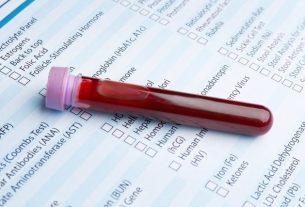Hemodynamics is a technique used to evaluate the functions of the heart and blood vessels, and can be indicated for the diagnosis and treatment of conditions such as heart attack, congenital heart disease, aneurysm, malfunction of heart valves and stroke.
Hemodynamics can be used in exams and procedures such as cardiac catheterization, angioplasty, angiography and stent implantation, being used in the areas of cardiology, neurology, radiology and vascular surgery.
Generally, hemodynamics are performed in a hospital environment, by a cardiologist or cardiovascular surgeon, with the administration of local anesthesia or light sedation, and can last from 20 minutes to one hour.

What is it for
Hemodynamics is used to diagnose and treat cardiovascular diseases, including:
- Acute myocardial infarction;
- Blockages in the heart arteries;
- Aneurysm;
- Arrhythmia;
- Stroke;
- Coronary artery disease;
- Cardiac insufficiency;
- Congenital heart diseases.
Thus, hemodynamics can be used to perform exams and procedures, such as cardiac catheterization, angioplasty, or coronary angioplasty, angiography and stent implantation.
Exams and procedures
The main hemodynamic exams and procedures are:
1. Cardiac catheterization
Cardiac catheterization is a procedure performed by a cardiologist, where an extremely thin flexible tube is inserted into the artery in the arm or leg, up to the heart, to check the inside of the blood vessels and the heart.
Cardiac catheterization is indicated to evaluate the functioning of the heart and changes in the structures of the heart or obstructions in the coronary arteries, helping in the diagnosis and/or treatment of diseases, such as acute myocardial infarction, cardiomyopathies or arrhythmias, for example.
Read too: Cardiac catheterization: what it is, how it is done and care
2. Angiography
Angiography, or arteriography, is an exam that evaluates blood vessels and blood circulation, being indicated to diagnose diseases such as aneurysm, blood vessel malformations, cerebral hemorrhage, atherosclerosis or to investigate and locate bleeding or blockages in abdominal vessels. , heart and kidneys, for example.
3. Angioplasty
Angioplasty or coronary angioplasty is a medical procedure that allows the removal of fatty plaques from the arteries, being indicated for the treatment of acute myocardial infarction, coronary artery disease or cardiac ischemia. Understand better when angioplasty is indicated.
In addition, angioplasty may also be indicated to unclog arteries in the lungs, neck, brain or kidneys, for example, and treat chronic thromboembolic pulmonary hypertension, carotid artery disease or chronic kidney disease.
4. Intracoronary ultrasound
Intracoronary ultrasound is an exam that allows detailed visualization of the artery walls and can be used to complement diagnostic cardiac catheterization or during coronary angioplasty.
Therefore, when catheterization identifies blockages in the arteries caused by fatty plaques and/or clots, ultrasound helps to visualize them with greater precision and detail.
How is the preparation
The hemodynamic preparation varies depending on the type of exam to be performed, but, in general, the person should fast for 4 to 8 hours and stop drinking alcoholic beverages one day before the procedure.
In addition, the doctor may also ask you to suspend the use of some types of medication and it is also important to take a companion on the day of the exam.
How it is made
Hemodynamics is performed in the hospital by a cardiologist or cardiovascular surgeon using local anesthesia or light sedation, inserting a catheter into the blood vessels in the arm or leg, which is guided through fluoroscopy images, which helps visualize the movement of the catheter in the body.
In addition, the doctor or nurse may also administer a contrast injection into the vein to help obtain better definition of the images.
Typically, the exam lasts 20 minutes to an hour. After the exam, the person is taken to a recovery room where they will rest and be monitored for a few hours and, if there are no complications, they will then be released.
Possible complications
Possible hemodynamic complications that may occur include bleeding, pain or infection at the catheter insertion site, formation of blood clots, allergic reactions to contrast and cardiac complications, such as arrhythmias.
Furthermore, in some cases, hemodynamic exams and procedures can also cause kidney damage in people with a history of kidney problems, due to the use of contrast.

Sign up for our newsletter and stay up to date with exclusive news
that can transform your routine!
Warning: Undefined array key "title" in /home/storelat/public_html/wp-content/plugins/link-whisper-premium/templates/frontend/related-posts.php on line 12
Warning: Undefined array key "title_tag" in /home/storelat/public_html/wp-content/plugins/link-whisper-premium/templates/frontend/related-posts.php on line 13



